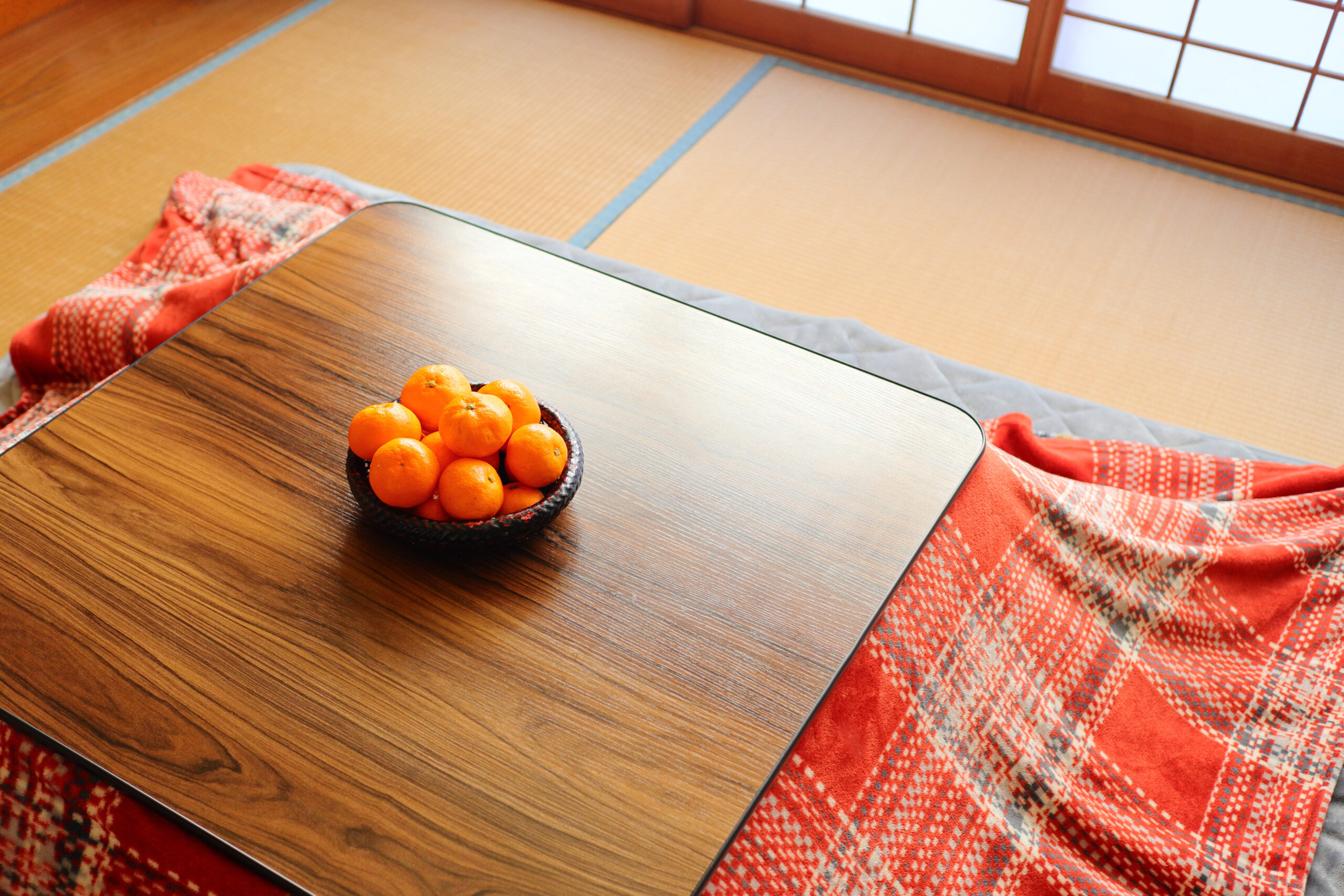~Welcome to the Ultimate Paradise of Warmth and Laziness~
In my last post, I introduced the wonders of Japan’s winter staple, hot pot dishes. But there’s another winter essential that simply cannot be left out when discussing Japan:
The kotatsu.
Perhaps some of you have never even heard the word “kotatsu” before. It’s a traditional piece of furniture that consists of a low table with a heater attached underneath and a thick blanket draped over it. This magical contraption is undeniably one of the most iconic symbols of Japanese winters.
Imagine a gentle warmth enveloping your cold body from beneath the table—a spellbinding invention that turns your home into a “winter wonderland” cut off from the harsh reality of the season. But beware, for the kotatsu possesses a certain devilish charm. Today, let me guide you through its fascinating history and the irresistible depths of its temptation.
~From Sengoku-Era Heating to the Modern Laziness Machine~
The origins of the kotatsu date all the way back to Japan’s Muromachi period (around the 14th century). Back then, it was called a “kotatsu” (written as “炬燵”) and was essentially a wooden frame placed over an open hearth with a blanket draped over it. It was a brilliant solution for staying cozy indoors during frigid winter days.
In the Sengoku period, portable versions using braziers were introduced, and by the Edo period, the kotatsu evolved into something closer to its modern form, utilizing charcoal for heat. Fast forward to today, and we now have electric kotatsu: safer, more convenient, and downright addictive.
What began as an efficient heating solution has somehow transformed into what can only be described as the “ultimate symbol of sloth.” The secret lies in its design, which lures you into a cocoon of comfort so irresistible that once you’re in, escaping feels nearly impossible.
The kotatsu’s greatest charm is, without a doubt, the blissful warmth that envelopes your entire body. Sliding your cold feet under the blanket is one of the most satisfying moments of a Japanese winter. But this comfort comes with a side effect—yes, the kotatsu will absolutely ruin you.
It always starts innocently: “I’ll just sit here for a quick break.” Before you know it, an entire day has slipped away. You’re snacking on mandarins, binge-watching TV, maybe even dragging a blanket inside to take a nap. Even as you remember all the tasks waiting to be done, the effort it takes to leave the kotatsu feels Herculean. This seductive laziness is precisely what makes the kotatsu so devilish.
In a classic Japanese nursery rhyme about winter, there’s a line that goes:
“Dogs run joyfully around the yard; cats curl up snugly in the kotatsu.”
It paints a humorous picture of cats surrendering to the kotatsu’s warmth while dogs frolic in the snow. But reality is far more amusing—on cold winter days, even dogs can often be found curled up inside the kotatsu, defying their energetic reputation. This funny little image only underscores the kotatsu’s universal, devilish charm.

While the kotatsu has a long history, its modern iterations have become even more irresistible.
Specialized chairs for kotatsu, laptop stands for “productive” work under the blanket, and even high-tech versions integrated with sofas now exist. There are also taller kotatsu tables that let you use chairs instead of sitting on the floor, making it easier than ever to do everything without ever leaving the warm embrace of the kotatsu.
At first glance, these innovations seem designed to “increase efficiency.” In truth, they simply encourage a lifestyle where everything—eating, working, sleeping—is done without ever leaving the kotatsu.
For centuries, the kotatsu has been a centerpiece of family life in traditional Japanese homes. It’s where families come together to share mandarins, chat, and watch TV. This heartwarming scene is a quintessential part of winter in Japan.
While its devilish charm may lead to unproductive days, the kotatsu also creates a uniquely cozy space that brings people closer together. As both a cultural tradition and a modern-day temptation, the kotatsu is something to be enjoyed—but always in moderation.
So why not experience the “magic of the kotatsu” for yourself?




コメント